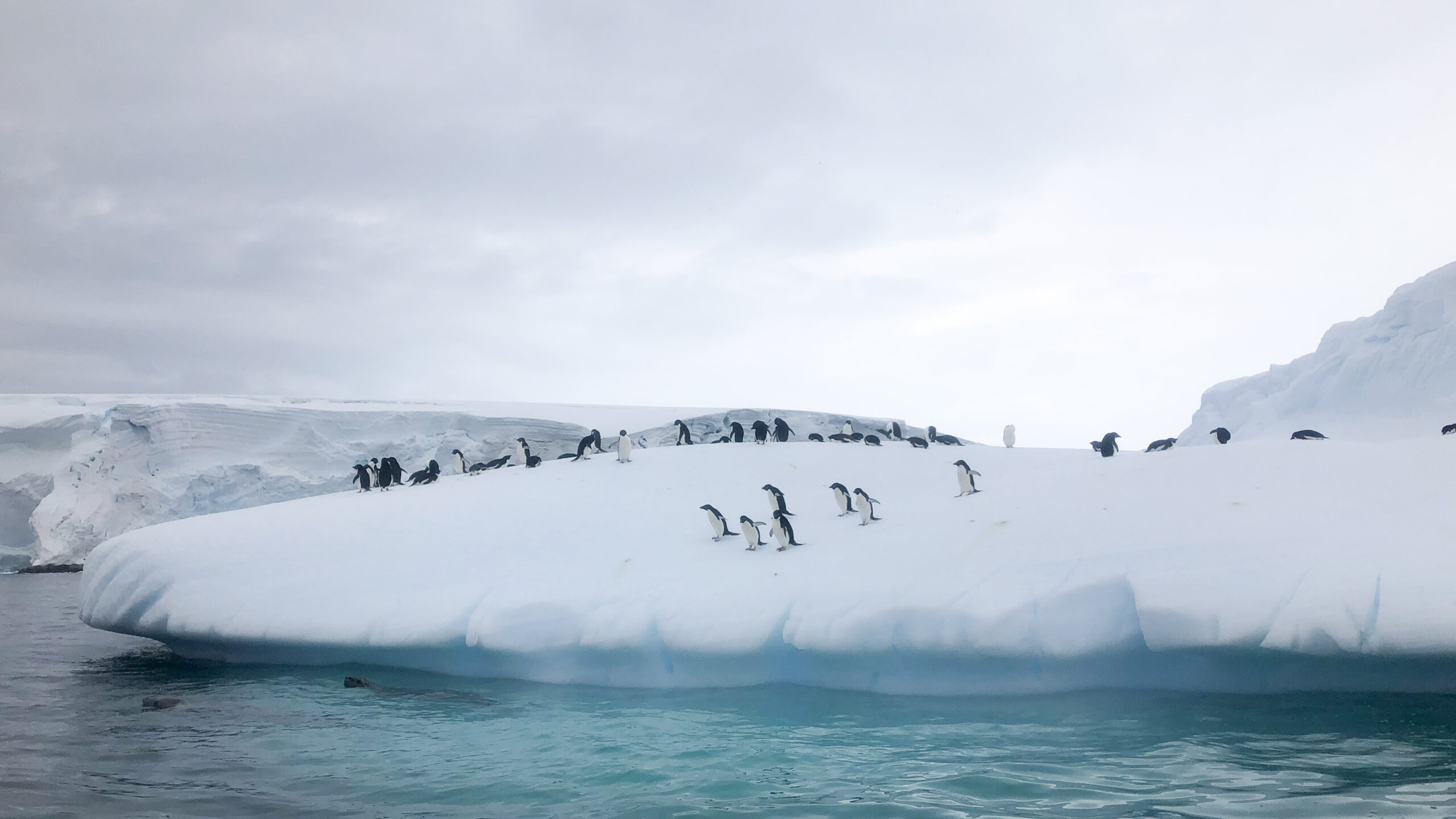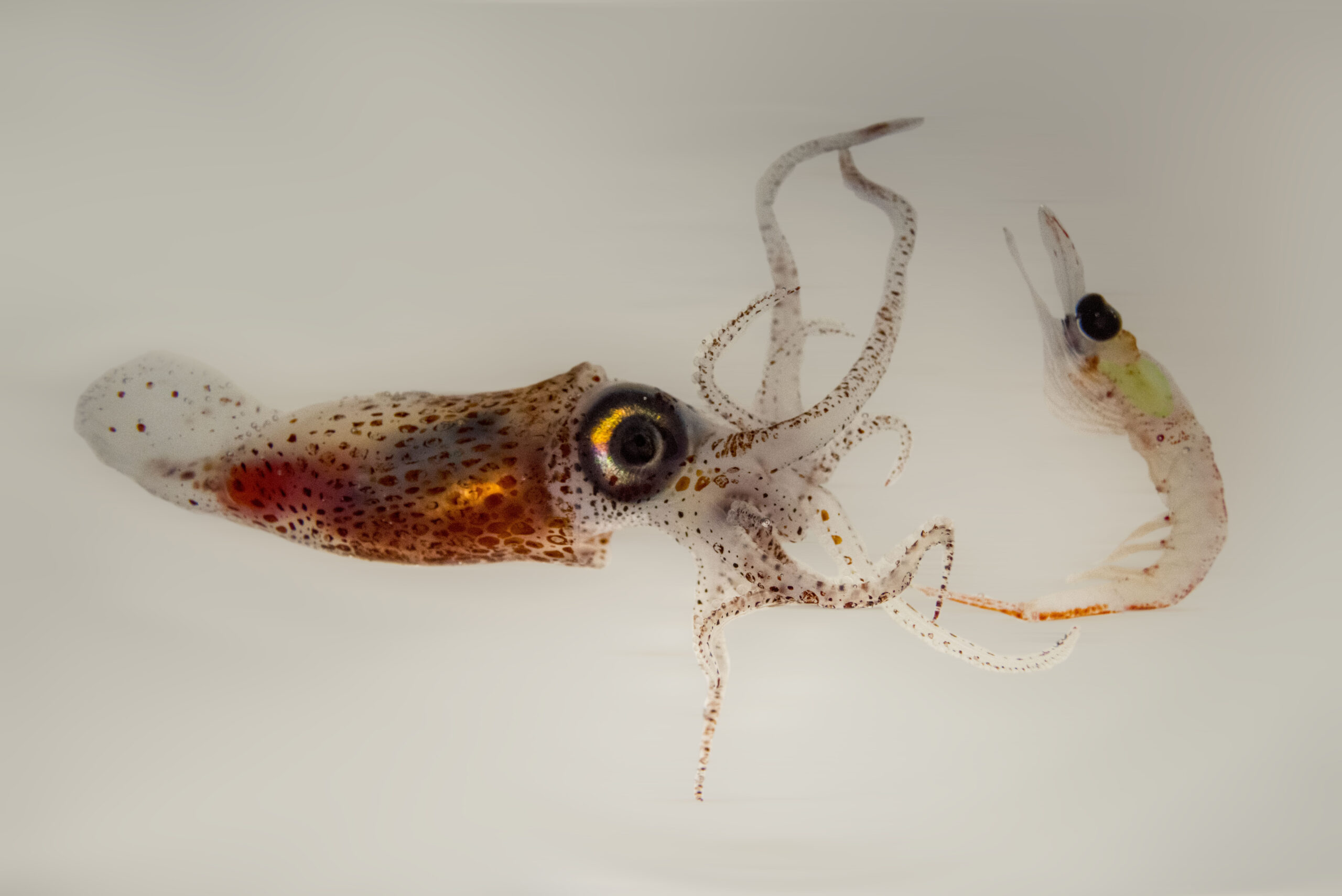In a new paper published in Limnology and Oceanography, researchers at the Palmer Antarctic LTER show that the Adelie penguin population has suffered as a result of climate change induced krill shortages.

It begins with krill
Lots of sea ice, a huge phytoplankton bloom, a cold winter, not much…when these conditions align on the Western Antarctic peninsula, primary productivity skyrockets, and then krill respond with a breeding frenzy. Their population skyrockets. Their predators, including Adelie penguins, feed like crazy, boosting reproductive events of their own.
The krill boom supports the ecosystem for the next few years. At first, the waters are teeming with krill. But as the years go on, krill become scarce.
The consistency of this primary productivity cycle is key for Adelie penguins. Just as food limitation is getting severe, conditions align for another spike in productivity. Then, krill reproduce en masse, and the next few years of krill abundance provide sustenance for the penguin population once again.
But that cycle is changing, a new paper from the Palmer LTER site shows. Krill aren’t recruiting as consistently, a result of changing environmental conditions. That’s leaving penguins with longer periods of food scarcity, and penguin populations have declined over 90% in response.
The culprit, the authors think, is declining primary production. Before 1990, primary productivity regularly exceeded the threshold required for krill recruitment, leading to periodic replenishment of the penguin’s food supply. Since 1990, though, primary productivity has only exceeded that threshold once every five or so years—far less frequently than before. Declining primary productivity is likely a consequence of climate change, and the work highlights how climate change can amplify natural variability in an ecosystem, throwing a system’s delicate balance out of whack.

Credit: Andrew Corso, CC BY-SA 4.0.
An ecological symphony
Amanda Lohmann, lead author of the paper, used long-term data from the Palmer LTER to link krill, Adelie penguins, and environmental conditions, Lohmann found that all three oscillated on a similar 5-year cycle. Spikes in primary productivity, a proxy for phytoplankton blooms, occurred first, followed two years later by a spike in krill density. Two years later, or four years after that primary production spike, the number of Adelie breeding pairs declined precipitously.
Lohmann’s data from the Palmer LTER stretched as far back as 1992. The LTER data’s richness was key to uncovering the five year cycle in each metric—she needed long-term data with relatively high resolution to find these year-to-year variations. Previous efforts to connect Adelie declines to krill supply had taken a coarser approach, using decades-long krill density averages, which don’t resolve the critical fluctuations.
Reconstructing the past
But the LTER dataset had one drawback: it showed a constant decline in both krill and penguin populations through those years. The LTER dataset must have started tracking populations after they had already begun to decline, Lohmann reasoned. Lohmann wanted to know what the recruitment cycle looked like when the ecosystem was more stable. To do that, she needed older data.
Data from krill net tows in the Antarctic stretch as far back as 1978. Though this older dataset doesn’t match the high-resolution krill counts of the LTER data, it does track the body size of krill each year. That body size data proved invaluable. When average krill body size shrinks significantly between years, it signals a recruitment event: the ecosystem is flooded with young, tiny krill.
Using these krill body size data, Lohmann was able to reconstruct the consistency of krill recruitment events all the way back to 1972. The pattern was striking. In the early years, between 1978 and 1990, krill maintained a steady recruitment beat. Since 1990, though, that recruitment consistency had dropped significantly.

Credit: Andrew Corso, CC BY-SA 4.0.
Making a problem worse
What’s causing krill to recruit less often? “I think the simple answer is that the climate is warming, the average amount of sea ice is going down, and both are bad for primary production in this region,” says Lohmann. That primary production signals a big algae bloom, krill’s preferred food, which fuels krill recruitment events. But krill only recruit once primary productivity exceeds a threshold value in the region.
Lohmann estimated historical primary productivity using a model that predicted productivity based on an oceanographic cycle, the Southern Annual Mode, which influences sea ice and a host of other factors in the Antarctic. Her model showed that primary production continued to spike in a five year cycle throughout the time series. However, mean productivity showed a sharp decline around 1990. In more recent years, productivity consistently fell below the threshold required to trigger a recruitment event—a dramatic change from earlier data, where yearly productivity often exceeded that threshold. “Basically, the mean value around which primary productivity oscillated decreased between the 1980s and the 1990s, causing fewer years to rise to the threshold of prompting a high krill recruitment event,” says Lohmann.
While Lohmann stresses that this model is, at best, an estimate—there is no primary productivity data in the 80’s with which to validate her modeled results—the link suggests that changes to the broader climate since 1990 are the likely culprit of the disruption to the krill cycle.
A canary in a coal mine?
The disruption to the krill and penguins, though, highlights an important point: many parts of an ecosystem lie in delicate balance, and small shifts can have far reaching impacts. In this case, adding just a few more years of food scarcity tanked the Adelie population. Their ability to weather those shortages, which are now longer, is the contributing factor to their decline. “I think there’s a growing understanding that variation and other climate oscillations have a really big impact” on ecosystems, says Lohmann.
Yet this kind of work is “only becoming possible as we get more and more long term time series,” says Lohmann, who notes that both the krill and penguin datasets are unusually detailed. “Going and doing a study for one or two years is not enough to actually see what’s happening with the ecosystem.”
For other species in the Antarctic, though, researchers might never know if their populations also suffered in response to changes in krill. “We had really clear data for the penguins,” she says. Other krill predators, such as whales or seals, weren’t nearly as well tracked. But as krill are the critical food source for many species, it’s likely others are affected as well.
The good news for the penguins is that their populations are stable in other parts of Antarctica. The good news for science is that the Palmer LTER continues to collect high quality, long-term data that allows researchers to resolve patterns that would otherwise be hidden.
by Gabriel De La Rosa










